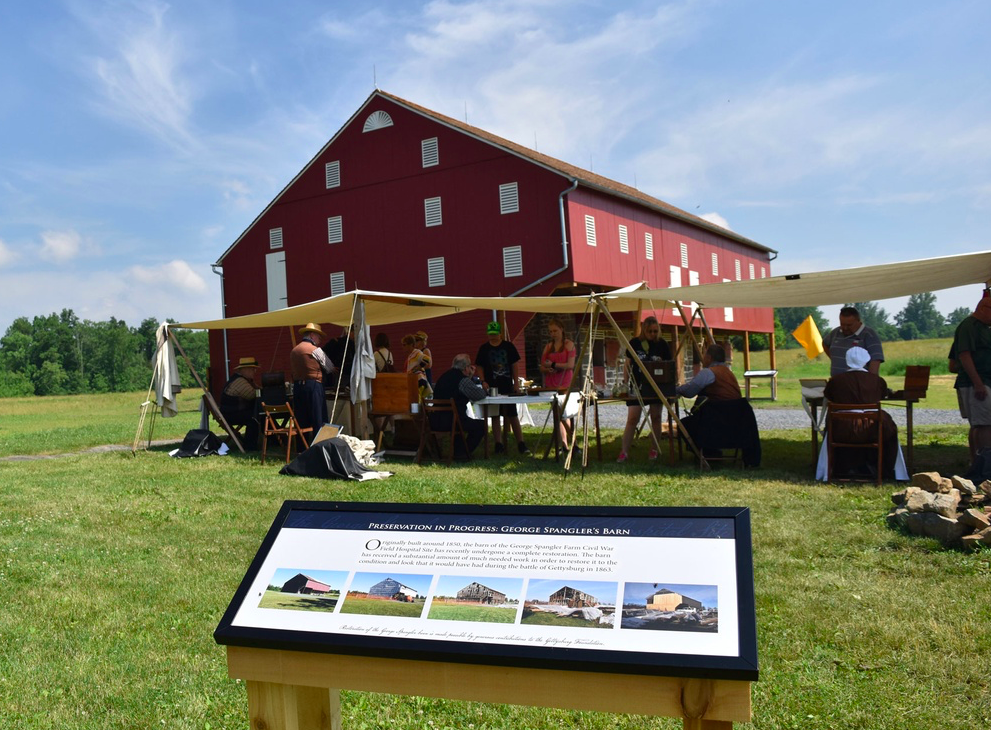A Key Role in Union Victory - Review of "Too Much For Human Endurance": The George Spangler Farm at Gettysburg
Ronald D. Kirkwood, “Too Much for Human Endurance”: The George Spangler Farm Hospitals and the Battle of Gettysburg (Savas Beatie, 2019).
I often hear historians and others crack wise whenever a new book on Gettysburg hits the ever-growing niche bookshelf. I mean…there are thousands of volumes on the battle - do we really need another one?
My answer: yup. Especially when the subject matter is an understudied topic. And believe it or not, there is still plenty left to consider about this battle, the battlefield, the people involved, and the legacy of the Civil War’s three bloodiest days. Enter Ronald D. Kirkwood’s new volume: “Too Much for Human Endurance,” which focuses on the George Spangler farm - situated south of Gettysburg between Taneytown Road and the Baltimore Pike just east of the Union battle-line on Cemetery Ridge. I found this to be a wonderfully crafted study on a part of the battlefield about which I knew relatively little. Students of the battle and visitors to the battlefield all know the Spangler name - the family owned a good deal of Adams County farmland and of course there is the storied (though rooted in apocryphal Gettysburg lore) Spangler’s Spring. As Kirkwood reveals, the George Spangler farm specifically played a pivotal role in the battle: as a hospital, transportation hub, and staging area. As such, one could surmise that the farm was an important part of the Union victory at Gettysburg.
Kirkwood provides an engaging narrative investigating the George Spangler Farm as the hospital site for the Union XI and II Corps beginning on July 1. Here we learn of the horrors experienced by the wounded and dying at a Civil War era hospital and the civilian experience of those who resided on farm. Readers will also value Kirkwood’s conclusions regarding the farm’s location near Cemetery Ridge, and how command of important arteries of advance passing through or near the property including the Baltimore Pike and Taneytown Roads proved essential to the Union effort. All of this rendered the farm absolutely essential as a staging area for reserve artillery that could be deployed where needed, making good use of the Union advantage in interior lines.
I especially appreciated Kirkwood’s use of first-hand accounts. What I found particularly helpful is how he uses these accounts to investigate contradictions in the reports…noting the problematic nature of participants’ testimony issued during and immediately after a very confusing fight. There are many wonderful anecdotal pieces to the Spangler Farm puzzle, but one in particular stood out to me in sharp relief: the story of Confederate General Lewis A. Armistead’s wounding and subsequent death at the Spangler Farm hospital. Was Armistead hit two or three times as he led his brigade against Union forces on Cemetery Ridge? Were his wounds mortal or superficial as some suggested? Did he expire from a gut shot or because of trauma afflicting an already worn-down body? I had always assumed that Armistead suffered a mortal wound at the culmination of “Pickett’s Charge” and simply lingered for a couple of days before succumbing…Kirkwood brings this into question using conflicting reports from multiple sources.
Kirkwood also doe a fine job sorting though the painstaking efforts to restore the farm buildings including the summer kitchen (where Armistead most likely died), the smokehouse, residence, and barn. All of these were until only a few years ago in a state of decay and in danger of collapse. Herculean efforts by the Gettysburg foundation, local historians, and craftsmen came together to recreate the scene as it most certainly looked in 1863. In terms of public history and historical interpretation, this is a must visit spot at Gettysburg.
I really enjoyed this study and I think you will as well - read the book and then make your reservations to visit the farm when you get to Gettysburg. I’ve added it to the itinerary for my next yearly field trip, and I am quite certain my very inquisitive high school students will appreciate it more after reading a few passages from this book. And for what' it’s worth, tickets are free for cyclorama patrons/visitor center patrons.
With compliments,
Keith
The Spangler Farm in action.

